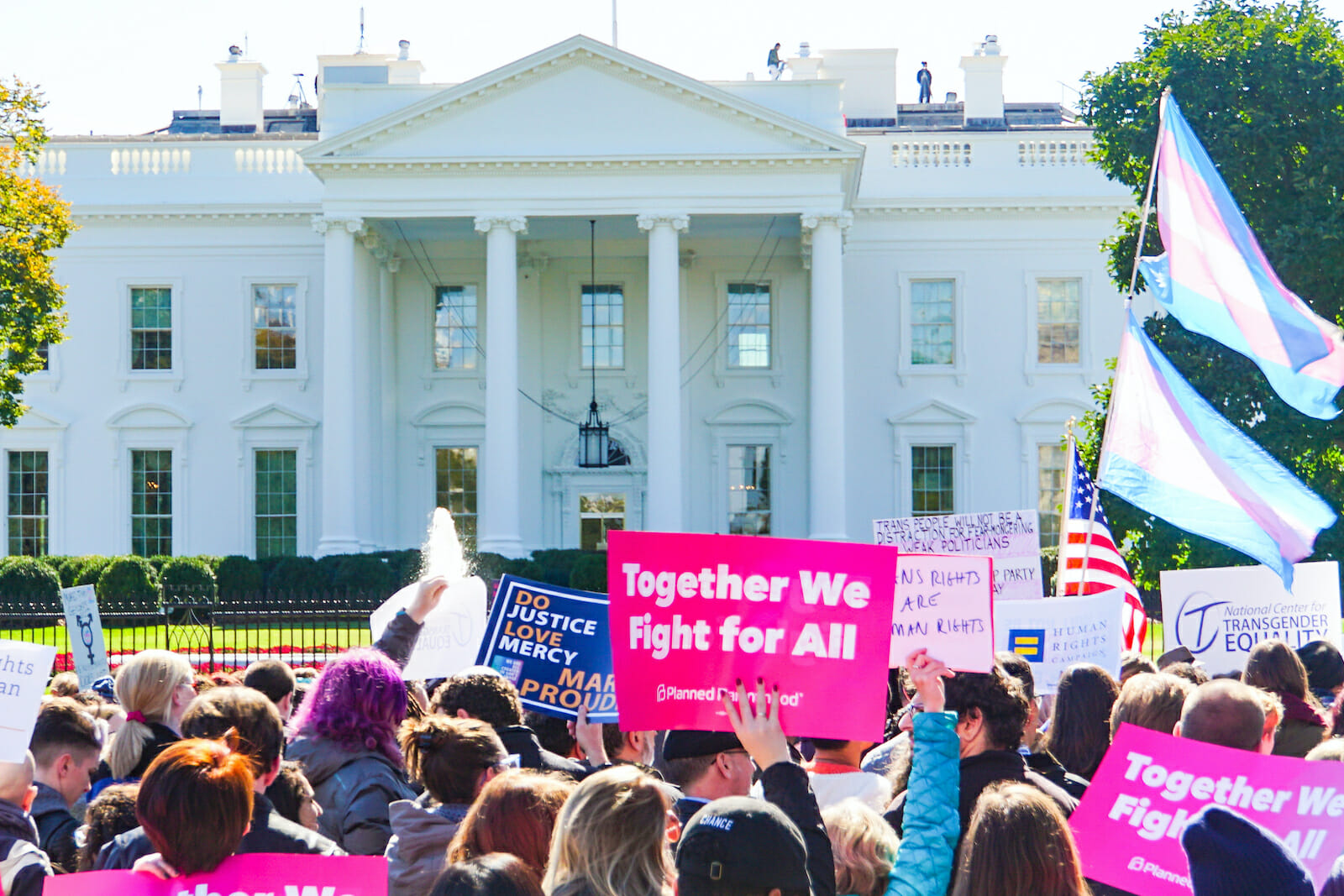
Culture
Unpacking the Transgender Conundrum
In the United States, the transgender movement is a relatively new movement. The percentage of Americans who claim to be transgender is relatively small. A variety of polls consistently show that transgender Americans constitute about 0.6% of the adult population.
Yet despite these relatively small numbers, the transgender movement commands much attention. Politicians, public figures, church leaders, human rights activists, and the lay public often weighs in on this subject. Scientists lend their influence and prestige to the transgender movement. Under the influence of the scientific community, the World Health Organization has ruled that gender dysphoria should no longer be regarded as a mental or behavioral disorder. Insurance companies find themselves under constant pressure to include various treatments and procedures associated with gender change into their healthcare plans.
Debates over the use of public restrooms have been one venue that introduced the general public to the transgender movement. There is also the issue of transgender females competing against biological females in athletic events, protection of various transgender rights, employment, and access to medical services. Even our use of personal pronouns has not escaped the transgender controversy.
Perhaps the most explosive issue associated with the transgender movement concerns children and adolescents. The decision to change one’s gender has serious implications. It involves long and costly treatments and surgical procedures that are expensive and carry considerable health risks. Gender changes are in many instances irreversible, particularly when they involve surgeries. Critical questions arise in connection with such decisions: who and at what age can someone make such decisions.
Advocates and activists of the transgender community argue that gender identity takes shape at an early age. Therefore, they contend, gender transitions must be initiated in the pre-puberty age. Dr. George Brown, a professor of psychiatry and a three-time board member of the World Professional Association for Transgender Health, argues that gender identity “is usually established early in life, by the age of 2 to 3 years old.” Consequently, the preparation for gender transition should start well before the onset of puberty. Critics of this viewpoint point out that children and even adolescents are not in the position to make such important decisions in an informed and responsible manner; they cannot even comprehend their consequences.
These disagreements acquire particular importance since there is no clear understanding of general issues related to gender and sex. In fact, transgender activists even pride themselves on having no clear gender theory since, they argue, gender has to do with individual experience that defies categorization.
The distinction between gender and sex is central to the transgender movement. Traditionally, sex has been associated with biology. By contrast, gender is widely considered a social construct, which relates to psychology and behavior. Transgender theorists have upended this view. They argue that biological characteristics present at birth do not define one’s sexuality—they call it “assigned sex.” They argue that gender determines one’s sexual identity. To make things even more complicated, they also assert that gender has biological roots, although they fail to indicate them. Dr. Deanna Adkins, the Director of the Duke Center for Child and Adolescent Gender Care, has argued that “evidence strongly suggests that gender identity is innate or fixed at a young age and that gender identity has a strong biological basis.”
I do not intend to take readers into the thick of the debate of nature vs. nurture. I want to simply state one very obvious fact with which both sides in the transgender controversy agree. Gender is primarily about our mental constructs. It is about what is going on in our individual or collective mind. Therefore, the conclusion that inevitably follows from this recognition is that only individuals who are fully informed and in control of their mental facilities can make fully informed decisions regarding gender changes. What could be this age? I think we have a pretty good idea. We define it as the age of consent, which is roughly between 18 and 21—that is, after puberty.
While activists of the transgender movement argue that gender—a mental construct—defines sexual identity, they also argue that gender has biological roots. If the former argument supports the post-puberty transition, the latter argument favors the pre-pubescent transition. As one can see, this position is contradictory. It tries to have it both ways: while maintaining the primacy of gender, they nevertheless advocate an early transition before reaching full maturity. Transgender activists do not see this contradiction, to say nothing about analyzing and resolving it.
One can agree with the transgender argument that mental constructs are real physical phenomena. Indeed, mental constructs involve the emergence of neural networks that sustain them. Therefore they entail physical changes. The human brain represents the most powerful level of organization in humans. It coordinates and regulates physiological functions. It offers more possibilities than any other level of organization in our body. Given this fact, it is hard to imagine that our mental constructs are determined by some biological factors; or if they are, then we must recognize that our biological sex must define our gender identity, not the other way around as transgender theorists argue. There is just no way to have it both ways.
Gender is a concept that even adults find difficult to understand. Explaining this concept to adolescents, to say nothing of children, is impossible. Yet, understanding this concept is essential if one is to make an informed decision regarding gender changes. Therefore, one would be well advised to exercise extreme caution in negotiating this difficult terrain. Children and even adolescents are prone to fantasizing and often have a difficult time differentiating between their fantasies and reality. That is why our law treats them differently than adults, and with good reason. The argument in favor of later post-pubescent transition is very strong. Starting transition before puberty and full maturity is likely to become the source of numerous problems later in life.
Meet the poster child of the transgender movement—Miss Jazz Jennings. Jazz has been in the spotlight since 2007 when she gave an interview on ABC News “20/20” in which she, then still a boy of six, told Barbara Walters that she felt that she was a girl, not a boy. Obviously, when we deal with a child of six, or even older, we can only talk about vague desires and feelings, not a rational and informed decision. Jazz’s parents supported her transition. At age 11 Jazz began hormone therapy. She had her first gender confirmation surgery in 2018 at age 17. She subsequently underwent two additional and very difficult surgeries and had a bout with a serious infection that, luckily for her, ended well, at least for now. This is the price that Jazz had to pay; this is the path that she had to travel. She says that she is proud of her scars but she still has to bear them, despite her heroic attitude.
Now at the age of 19 Jazz has finally achieved her goal of becoming a woman. She enjoys much attention and has made a remarkable career on television. She is in many ways a success story. Yet, even she faces difficulties that ensue from her transition. Others may not be so lucky.
One can certainly admire the perseverance and determination demonstrated by Jazz and her parents. But one can legitimately ask questions about the rationality of pursuing something that involves many dangers and complications just to fulfill what a child feels at the age of 6. Many of us want to be many things at the age of 6. It is only later that we are able to tell which of these things we wanted are real and which were mere child fantasies. In a word, we would be well advised to delay the transition into a different gender until adulthood.
Issues related to sexuality and gender defy simple and simplistic approaches. These emerge at the intersection of very different spheres: social, political, psychological, biological, physiological, economic, legal, and others. For this reason, the approach in dealing with these issues, including the transgender issue, must reflect their complexity. Its basis cannot be an eclectic aggregation of information from different and divergent sources; it must be integrated into one whole in which parts are closely entangled with each other. The need for a synthetic approach points in the direction of universality. Only an approach that is truly universal can combine different and specific fields as particulars in a common frame.
The roots of universality reach into the nature of our universe. The universe is the whole that includes everything as its particular cases. The process of creation is what makes our universe possible. Since our universe is all there is, nothing can come into our universe from outside and nothing can disappear from it because there is nowhere to disappear. Everything must be conserved. Conservation requires access to new resources. The only way to gain such access is to create new and increasingly more powerful levels of organization that offer new possibilities. Conservation requires creation. The process of creation sustains our universe and gives rise to everything that exists in it, including our knowledge, and our moral and aesthetic values.
Given its universality and ubiquity, the process of creation should be the main organizing principle of our practice. It should be central to the way we educate and bring up our young, including our practice in dealing with issues of gender and sexuality. The attitudes of our young men and women toward sexuality and gender cannot be dissociated from an understanding of their important and creative role in shaping their own mind, life, and society. They should understand the relationship between their actions and the fundamental process that is the source of who they are and will be–the process of creation.
This process is not something abstract. It is very concrete. It is the process of shaping one’s own mind and life, creating social and intimate relations, and decisions about gender and sexuality. The issues of gender and sexuality are not to be taken lightly. Young men and women should fully understand the critical significance of these issues in their life. They, and no one else, can be and should be responsible for these decisions; and they can make them only when their mind is in control of what and how they think.
The broad resonance of the transgender controversy indicates that it has touched a nerve. It reaches to the broad themes of our place in this universe. The appeal of the transgender movement resonates with the broader appeal of modernity with its anthropocentric affirmation of human autonomy and domination over nature. However, there is no recognition of our autonomy without recognition of the autonomy nature. Recognizing the autonomy of nature does not entail abandoning our own autonomy. On the contrary, it opens broad prospects for self-empowerment and affirmation of human dignity.

